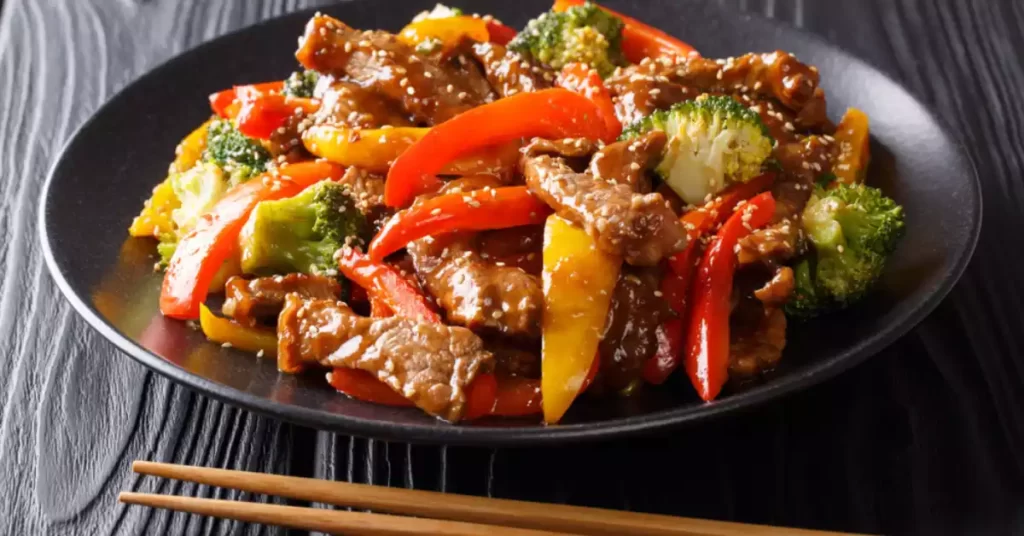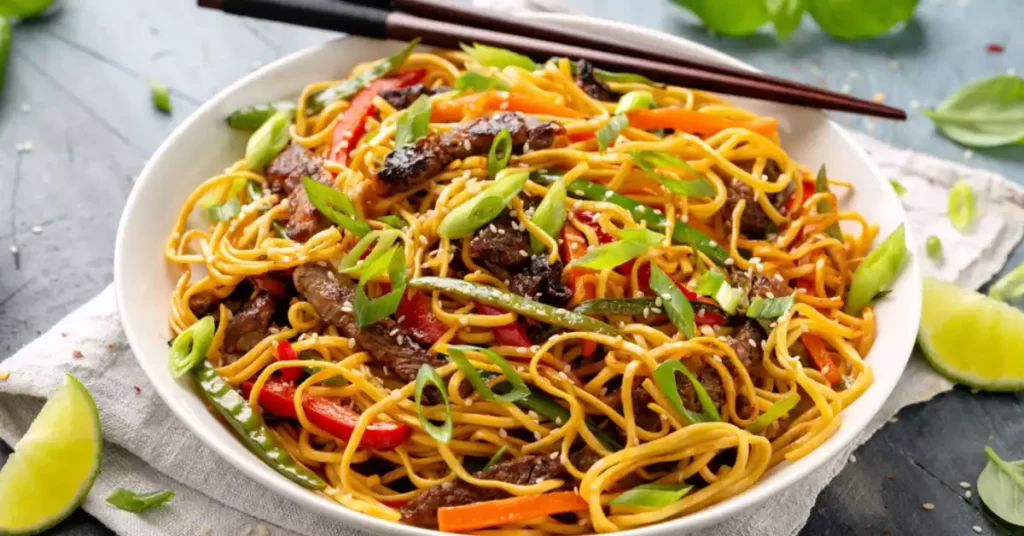Stir fry is a culinary delight, combining a diverse mix of ingredients tossed quickly in a searingly hot pan. This Asian-inspired cooking technique allows for immense flexibility and customization, encouraging both culinary creativity and practical kitchen economy. With the right ingredients and proportions, anyone can whip up a delicious stir fry dish in no time.
When it comes to stir fry, portion size matters significantly. Ensuring each person gets enough of the flavorful protein, crunchy vegetables, and perfectly cooked grains or noodles is a delicate balance. A general rule is to allocate about 4 ounces of protein, 2 cups of raw vegetables, and a half to a full cup of cooked grains per person.
The key to a successful stir fry is not only in the ingredients you choose but also in how much you use. Portions are not just about quantity; they impact the overall balance of flavors and textures in the dish. The right portions can make your stir fry go from a simple weeknight dinner to a memorable meal.
Key Factors in Determining Stir Fry Portions
Individual Dietary Requirements
When planning the portions for your stir fry, the dietary requirements of those you’re cooking for come into play. If someone prefers more protein, you might want to increase the protein portion a bit. For those who are more into vegetables, feel free to load up their dish with an extra serving of colorful veggies.
Variety of Ingredients in Stir Fry
A stir fry typically involves a wide array of ingredients. The variety helps ensure that everyone gets a bit of everything they love in their portion. Remember, a well-balanced stir fry has a good mix of protein, vegetables, and grains.

General Guidelines for Stir Fry Portions
Meat or Protein Portion per Person
A standard portion of protein for stir fry is around 4 ounces per person. This could include options like chicken, beef, tofu, or shrimp. But remember, these are general guidelines. Feel free to adjust based on personal preference or dietary needs.
Vegetable Portion per Person
For vegetables, a good rule of thumb is to include about 2 cups of raw vegetables per person. This might seem like a lot, but remember that vegetables will shrink during the cooking process.
Grain or Starch Portion per Person
When it comes to grains like rice or noodles, a half to a full cup of cooked grains per person is a standard serving. Again, this can be adjusted based on personal dietary preferences or needs.
Considerations for Special Dietary Requirements
When considering portions for stir fry, it’s crucial to keep in mind the dietary needs of those you’re cooking for. Each diet has different needs and restrictions, and your stir fry can be easily adjusted to accommodate these.
Adjustments for Vegetarian or Vegan Diets
For those following vegetarian or vegan diets, the primary source of protein—meat—is off the table. But that doesn’t mean a lack of hearty, fulfilling ingredients. Tofu, tempeh, or seitan can serve as excellent protein-packed alternatives. Vegetarians may also consider eggs as an additional protein source. Increase the vegetable portion in your stir fry, focusing on nutrient-dense choices like bell peppers, broccoli, and bok choy. To compensate for the grains or noodles typically included in stir fry, you could explore protein-rich grains like quinoa or use whole grain options for an extra fiber boost.
Adjustments for Low-Carb or Keto Diets
Preparing stir fry for those on low-carb or ketogenic diets involves some substitutions. These diets focus on minimizing carbs and maximizing protein and healthy fats. Increase the protein portion of your stir fry by adding extra meat, tofu, or perhaps some eggs. You might need to decrease or eliminate the grains entirely. Instead, use low-carb alternatives like cauliflower rice, zucchini noodles (zoodles), or spaghetti squash. When it comes to vegetables, focus on those with lower carb counts like bell peppers, broccoli, and zucchini.

Adjustments for High-Protein Diets
High-protein diets are popular among athletes and those focused on bodybuilding. For these individuals, increase the protein portion substantially. You can also consider incorporating a mix of proteins, such as chicken and shrimp or tofu and tempeh, for variety. The vegetable portion should remain the same to ensure they’re receiving enough micronutrients. To complement the increased protein, consider choosing high-protein grains, such as quinoa or a high-protein pasta, if grains are included in the dish.
How to Measure Stir Fry Ingredients
Precision in cooking leads to consistency and ensures everyone enjoys their meal as expected. While some experienced cooks can accurately “eyeball” ingredient quantities, using measuring tools can be especially helpful for those still getting the hang of stir fry portions.
Tools for Measuring Portions
Measuring cups, spoons, and digital food scales can be indispensable tools for portioning your stir fry ingredients. A digital food scale can provide the most accurate measurements, particularly for protein portions. It allows you to measure the exact weight of your meat, tofu, or other protein sources. Measuring cups and spoons, on the other hand, are excellent for portioning out your vegetables, grains, and sauces. These tools ensure everyone gets an equally balanced serving of your delectable stir fry.
Tips for Eyeballing Portions
If you’re caught without measuring tools or cooking in a rush, knowing how to eyeball portions can be a lifesaver. A rough guide for protein is that a portion about the size of your palm equates to approximately 4 ounces. For vegetables, two cupped handfuls are about equal to a cup. When it comes to cooked grains, a portion the size of your fist approximates one cup. While this method isn’t as accurate as using measuring tools, with practice, you’ll get a better feel for portion sizes, making your stir fry cooking experience even more seamless.
Maintaining Balanced Flavors in Stir Fry
A successful stir fry doesn’t just rely on the right quantities—it also requires the perfect balance of flavors. This harmony comes from the variety of ingredients and their interactions during cooking.
Role of Sauce in Stir Fry
Sauces play a pivotal role in stir fry, tying all the ingredients together into a cohesive, flavorful dish. The amount of sauce per person can greatly vary depending on personal preference. Some might prefer their stir fry saucy and rich, while others might enjoy a lighter touch. As a general guideline, start with about 2-3 tablespoons of sauce per person and adjust from there. Keep in mind that some sauces can be quite potent, so a little can go a long way.

Adjusting Ingredients to Maintain Flavor Balance
When adjusting your stir fry to accommodate different dietary needs, it’s crucial to maintain flavor balance. If you’re increasing the protein for a high-protein diet, consider using a bit more sauce to ensure the stir fry doesn’t become too dry. Similarly, if you’re increasing the vegetables for a vegan or vegetarian diet, you might want to adjust the spices and sauces accordingly to enhance the natural flavors of the vegetables.
Tips to Avoid Wasting Leftover Stir Fry
Making just the right amount of stir fry can be a challenge. But if you end up with leftovers, there are creative ways to use them and avoid food waste.
Proper Storage of Leftover Stir Fry
Leftovers should be cooled at room temperature before being transferred to an airtight container and stored in the refrigerator. Stored properly, leftover stir fry can be safely consumed within three to four days.
Creative Ways to Reuse Leftover Stir Fry
Leftover stir fry can be repurposed in several delicious ways. You could add it to a soup, turning a clear broth into a hearty meal. Another option is to use it as a filling for wraps or omelets. Or, consider making a stir fry fried rice. The options are endless, and with a little creativity, you can turn leftovers into an entirely new meal.

Frequently Asked Questions
Can I use frozen vegetables in my stir fry?
Yes, you can use frozen vegetables in your stir fry. They’re convenient and can save prep time. However, they might release more water during cooking, which can make your stir fry a bit soggy. To avoid this, consider partially thawing your frozen vegetables and patting them dry before adding them to the pan.
What is the best oil to use for stir fry?
High-smoking-point oils like peanut oil, canola oil, and avocado oil are excellent choices for stir fry. They can withstand the high heat required for stir frying without burning.
Can I prepare stir fry ingredients in advance?
Absolutely! You can chop all your ingredients and store them in separate containers in the refrigerator until you’re ready to cook. This method, known as “mise en place,” is a favorite among chefs for its efficiency.
Conclusion
Creating the perfect stir fry is a delicate dance of balancing portions and flavors. It requires consideration of individual dietary needs, understanding of ingredient interactions, and a bit of culinary intuition. But with the guidelines we’ve explored, you’ll be well equipped to dish out the perfect portions for any stir fry occasion.
Incorporating considerations for various dietary requirements, you can tailor your stir fry to be an inclusive dish that everyone can enjoy. From vegetarians to those on high-protein diets, everyone can partake in the flavorful delight that is stir fry.
Ultimately, stir fry is more than just a dish—it’s an opportunity to experiment with different flavors, textures, and ingredients. So, don’t be afraid to try different things and make the dish your own. After all, the joy of cooking lies in the journey as much as in the delicious end result.
